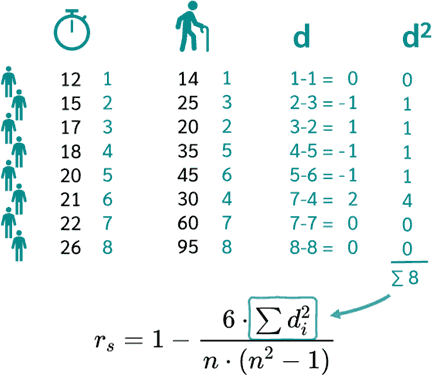One-Way ANOVA vs Two-Way ANOVA
One-Way ANOVA vs Two-Way ANOVA
One-Way Analysis of Variance (ANOVA)
Is a statistical test used to compare the means of two or more independent groups.
The independent variable has only one factor with multiple levels.
Tests for differences between group means on the dependent variable.
Assumes that the variances of the groups are equal (homogeneity of variances).
Purpose: To determine if there is a significant difference between the means of multiple groups (e.g., two or more).
Variables:
Independent variable: Categorical variable with multiple levels (e.g., treatment groups)
Dependent variable: Continuous variable (e.g., test scores)
Analysis:
Compares the variance between groups to the variance within groups.
If the between-group variance is significantly greater than the within-group variance, it suggests that at least one group is different.
Two-Way Analysis of Variance (ANOVA)
Is a statistical test used to compare the means of two or more independent groups, each of which has two or more levels of a second factor.
The independent variable has two factors, each with multiple levels.
Examines the main effects of each factor and their interaction on the dependent variable.
Assumes that the variances of the groups are equal (homogeneity of variances).
Purpose: To determine if there is a significant interaction between two categorical independent variables (factors) on a continuous dependent variable.
Variables:
Two independent variables: Categorical variables with multiple levels (e.g., treatment group and drug dosage)
Dependent variable: Continuous variable (e.g., test scores)
Analysis:
Extends one-way ANOVA to include two factors.
Tests for main effects of each factor and the interaction effect between them.
The interaction effect indicates whether the effect of one factor depends on the level of the other factor.
Key Differences:
Number of Factors: One-way ANOVA tests for differences between groups with a single categorical variable, while two-way ANOVA tests for differences between groups with two categorical variables.
Factors and Levels: In one-way ANOVA, the independent variable has multiple levels, while in two-way ANOVA, both independent variables have multiple levels.
Interaction: Two-way ANOVA includes an analysis of the interaction between the two factors, while one-way ANOVA does not.
Complexity: Two-way ANOVA is more complex than one-way ANOVA due to the additional factor and interaction analysis.
When to Use Each ANOVA:
One-Way ANOVA: When there is a single categorical independent variable and the goal is to compare means between groups.
Two-Way ANOVA: When there are two categorical independent variables and the goal is to determine if there is an interaction between them and/or if one or both factors significantly affect the dependent variable.
Example
One-Way ANOVA: A researcher wants to compare the average heights of three different breeds of dogs. The independent variable is breed, and the dependent variable is height.
Two-Way ANOVA: A researcher wants to compare the average test scores of students in different grade levels (factor 1) and under different teaching methods (factor 2). The independent variables are grade level and teaching method, and the dependent variable is test score.
......................................................................................................
👉 For the data analysis, please go to my Youtube(Ads) channel to Watch Video (Video Link) in
Youtube Channel (Channel Link) and Download(Ads) video.
💗 Thanks to Subscribe(channel) and Click(channel) on bell 🔔 to get more videos!💗!!
- Tell: (+855) - 96 810 0024
- Telegram: https://t.me/sokchea_yann
- Facebook Page: https://www.facebook.com/CambodiaBiostatistics/
- TikTok: https://www.tiktok.com/@sokcheayann999
- STATA for dataset restructuring, descriptive and analytical data analysis
- SPSS for dataset restructuring, data entry, data check, descriptive, and analytical data analysis
- Epi-Info for building questionnaires, data check, data entry, descriptive, and analytical data analysis
- Epidata-Analysis for dataset restructuring, descriptive and analytical data analysis
- Epi-Collect for building questionnaires, remote data entry, mapping, and data visualization
- Epidata-Entry for building questionnaires, data check, data entry, and data validation
ABA Account-holder name: Sokchea YAN
ABA Account number: 002 996 999
ABA QR Code:
or tap on link below to send payment:
https://pay.ababank.com/iT3dMbNKCJhp7Hgz6
✌ Have a nice day!!! 💞


.png)



Comments
Post a Comment